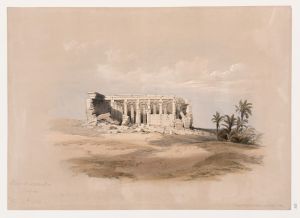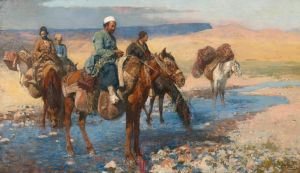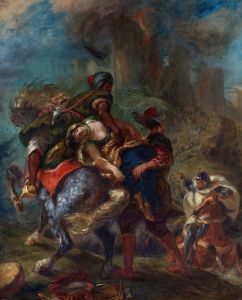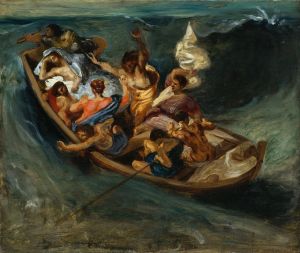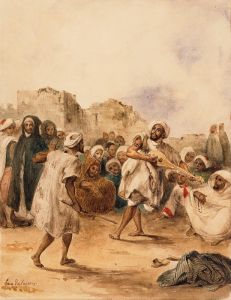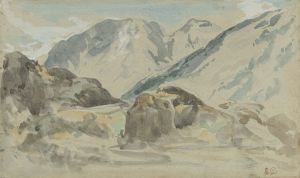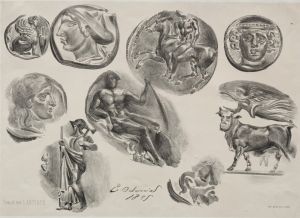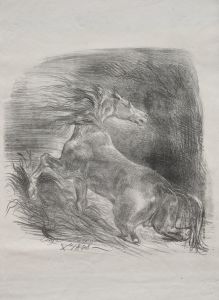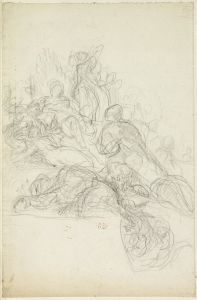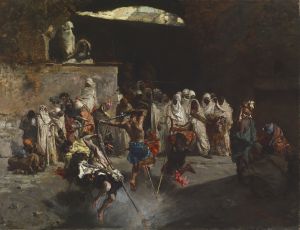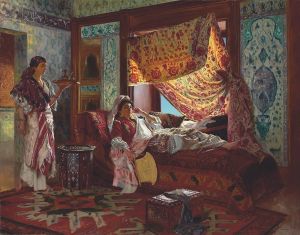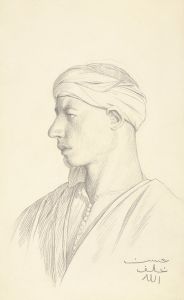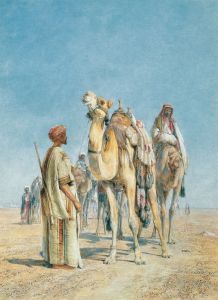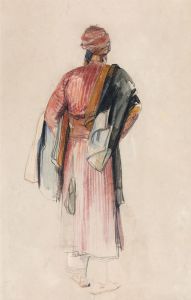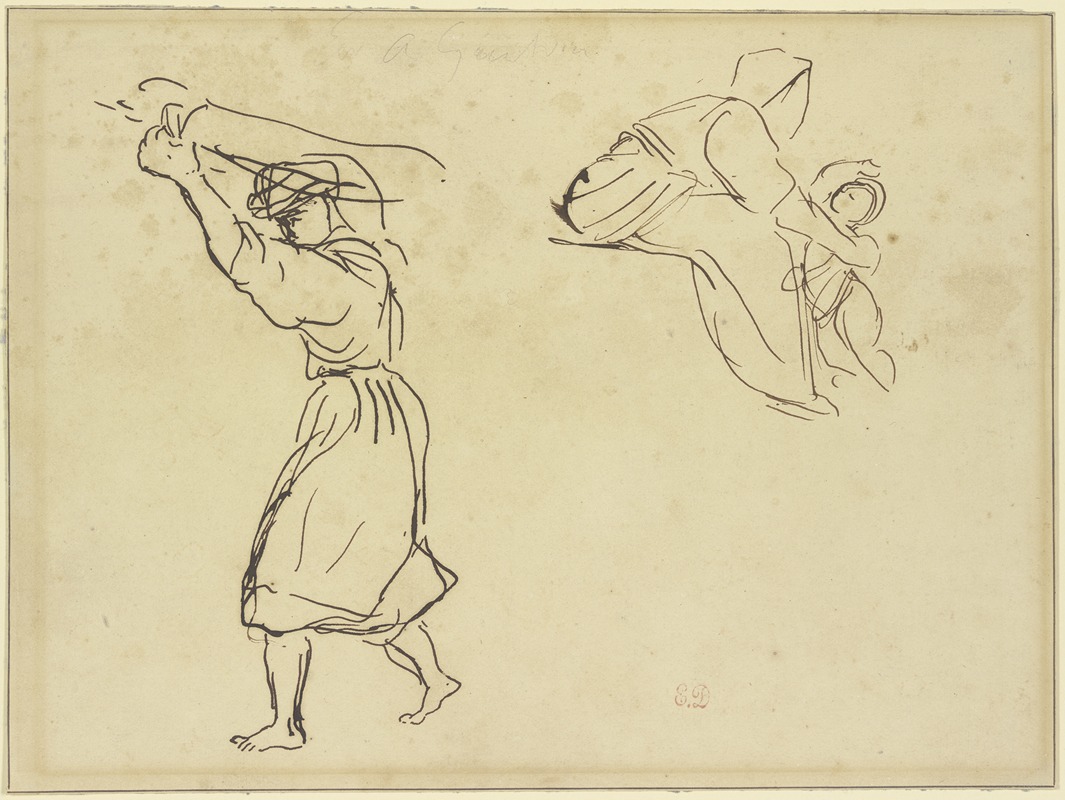
Studienblatt; Araber, ein Tuch schwingend; Mutter und Kind
A hand-painted replica of Eugène Delacroix’s masterpiece Studienblatt; Araber, ein Tuch schwingend; Mutter und Kind, meticulously crafted by professional artists to capture the true essence of the original. Each piece is created with museum-quality canvas and rare mineral pigments, carefully painted by experienced artists with delicate brushstrokes and rich, layered colors to perfectly recreate the texture of the original artwork. Unlike machine-printed reproductions, this hand-painted version brings the painting to life, infused with the artist’s emotions and skill in every stroke. Whether for personal collection or home decoration, it instantly elevates the artistic atmosphere of any space.
Eugène Delacroix, a prominent French Romantic artist, is known for his expressive brushstrokes and his fascination with exotic subjects. One of his works, "Studienblatt; Araber, ein Tuch schwingend; Mutter und Kind," reflects his interest in Orientalism, a theme that captivated many European artists in the 19th century. Delacroix's travels to North Africa in 1832 had a profound impact on his artistic vision, providing him with a wealth of inspiration drawn from the vibrant cultures and landscapes he encountered.
The title "Studienblatt; Araber, ein Tuch schwingend; Mutter und Kind" suggests that this piece is a study sheet, a type of work where artists experiment with different figures and compositions. This particular study includes the depiction of an Arab figure swinging a cloth and a mother with her child. Such studies were common in Delacroix's oeuvre as they allowed him to explore various poses, expressions, and interactions between figures, which he would later incorporate into larger, more finished compositions.
Delacroix's interest in Orientalism was part of a broader European fascination with the "exotic" cultures of the Middle East and North Africa. This interest was fueled by colonial expansion and the romanticized view of these regions as mysterious and culturally rich. Delacroix's works often depicted scenes of daily life, traditional costumes, and the dynamic movement of people and animals, capturing the essence of the places he visited.
In "Studienblatt; Araber, ein Tuch schwingend; Mutter und Kind," Delacroix likely focused on capturing the fluidity of movement and the emotional connection between the figures. His use of vibrant colors and dynamic compositions was intended to evoke a sense of immediacy and drama, characteristics that are hallmarks of his style. The study format allowed Delacroix to experiment with these elements without the constraints of a formal composition.
Delacroix's sketches and studies are highly valued for their insight into his creative process. They reveal his method of working through ideas and refining his approach to capturing the human form and its interactions. These studies also demonstrate his ability to convey emotion and narrative through simple yet powerful imagery.
While specific details about "Studienblatt; Araber, ein Tuch schwingend; Mutter und Kind" may not be extensively documented, it is clear that this work fits within Delacroix's broader artistic exploration of Orientalist themes. His contributions to the Romantic movement and his influence on later artists, such as the Impressionists, underscore his importance in art history.
Delacroix's legacy is marked by his ability to blend realism with romantic idealism, creating works that are both visually striking and emotionally resonant. His studies, including this one, offer a glimpse into the mind of an artist who was constantly seeking to push the boundaries of his craft and explore new artistic territories.





